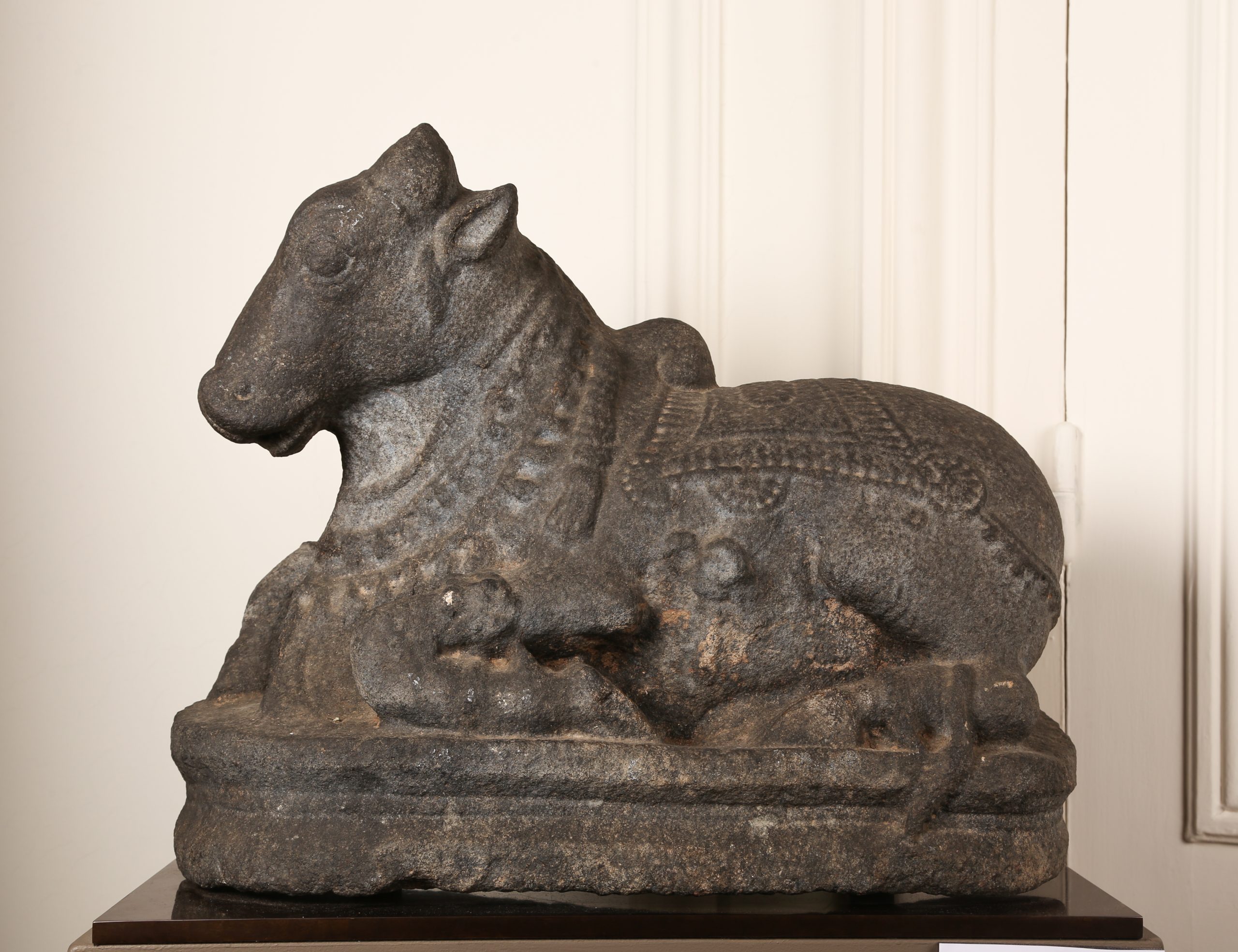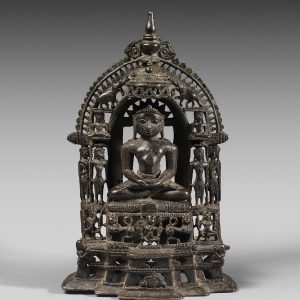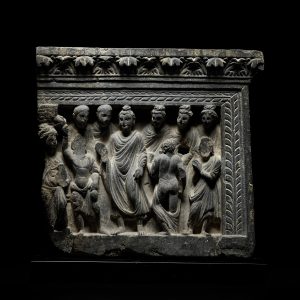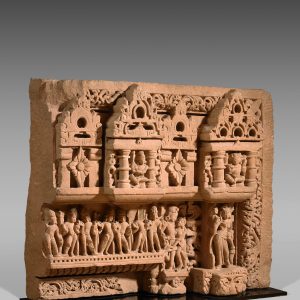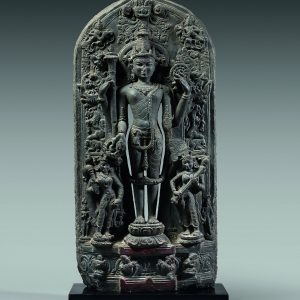Nandi
Granite
South India, Tamil-Nadu
11th-12th century, Cōla dynasty
H: 36 cm or 14 inch
Description
Dated to the 11th-12th centuries, this sculpture is part of the productions made under the Cōla rulers, the majority of which are of śivaitan obedience.The traditional mount of the god Śiva, Nandi’s name means “who gives joy”. Both a symbol of virility -embodying the destructive power of the god -and his first devotee, he occupies an important place in śivait iconography.
A treatment as realistic as it is ornamental
Here, the animal lies on its right side on a small oval base. It is depicted in a very realistic posture, with its legs folded under its body. The hoof of its right front leg is resting on the base in an assertive attitude. Its horns are slightly protruding, in accordance with the iconographic codes attributed to Nandi. Rich details enhance the sculpture, notably the embroidered carpet that covers the animal’s body. Garlands of flowers adorn its neck, while sacred cords join itstwo ears. These elements contribute to the finesse of the sculpture and its ornamental aspect.
A refined art
The bull’s eyes are wide open and surmounted by pronounced superciliary arches, like the statues of anthropomorphic deities. These features place this work in the aesthetics of the second Cōla period, where the silhouettes are slender, the plastics long and the facial features accentuated. The softly modelled sculptures make Cōla statuary a refined and highly prized art form.
A witness to the popularity of the śivaita cult
This work has its origins in the cultic context of the Cōla dynasty, whose śivaitan rulers erected numerous temples, notably at Gangaikondacholapuram, Pullamargai and Tanjore. At Tanjore, in the Rajarajeshvara complex, the bull Nandi is housed in a hypostyle pavilion that is an extension of the temple and mandapas. Its position within the complex testifies to its special status, and the specific cultic practices that were dedicated to it. Later, a statue of Nandi was erected in front of the Rajendracholeshvara temple, testifying to its ever-growing popularity. This Nandi bull is thus part of the Cōla cultic and architectural tradition, while adopting the Cōla canon, with its recognisable features.
Provenance : French private collection before 2000’s, then Galerie Barrère.

